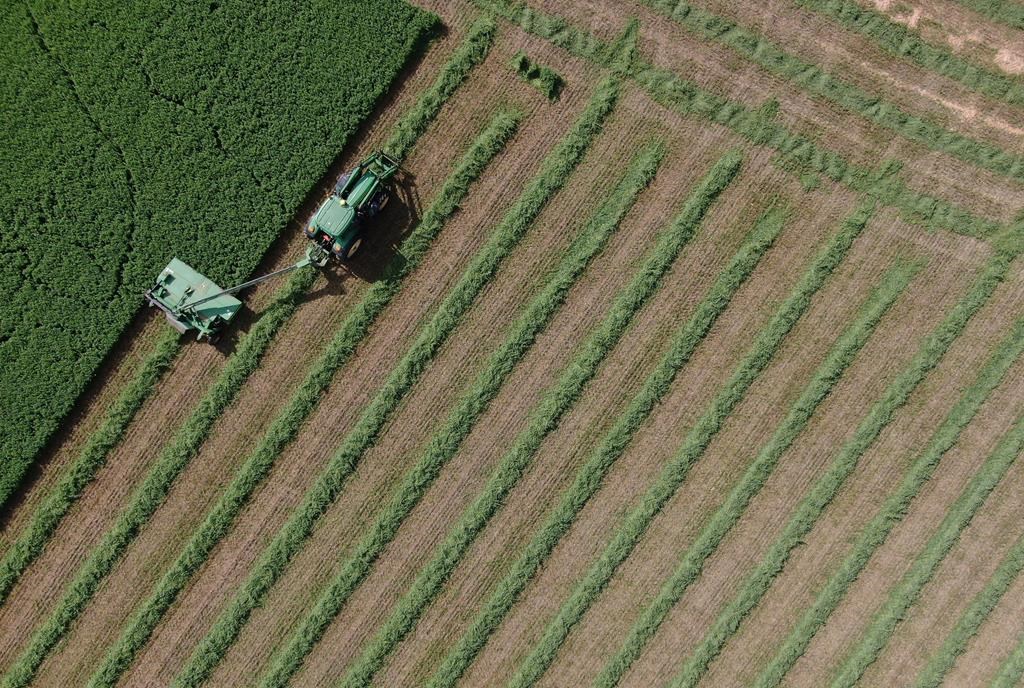Crispin Colvin has spent the last few weeks watching some of his crops die of thirst.
A recent scarcity of rainfall in southwestern Ontario has meant Colvin’s farm will yield less corn than usual this harvesting season and that means a lot less income – and a lot more worrying – for farmers like him, who depend on crops for their primary source of income.
“It’s stressful, to say the least,” says Colvin, who farms soybeans, corn and hay for livestock in Thorndale, Ont.
“But there’s not a lot you can do when it’s dry conditions like this.”
Many farmers in southwestern Ontario are currently dealing with the impact of unusually dry conditions in June and July so far, a situation that’s making crops suffer and lowering the yield expected from them.
Colvin, who’s also an executive director with the Ontario Federation of Agriculture, says less rain and subsequently lower yields will create a domino effect in the food chain, creating less product and driving up prices.
“If we’re getting less product out, there’s less to process, there’s less to sell … and what it does in turn is affect the price you’ll pay at the supermarket for products,” Colvin says. “I want the consumer to have what they want, what they expect, but I can’t make it happen without rain.”
Agriculture Canada’s Canadian Drought Monitor map, which looks at the severity of drought conditions across the country, shows “abnormally dry” conditions across Chatham-Kent in southwestern Ontario all the way to Vaughan, north of Toronto.
Trevor Hadwen, an agroclimate specialist with the federal department, says while some crops can do well in dry conditions, others like corn and soybeans don’t fare well during their flowering period.
“We do need a little bit of moisture, we need a little bit of wind and more mild temperatures to get through that critical phase in the agriculture season for the corn growers,” he says.
James Herrle, who farms near Waterloo, Ont., says some rain that fell early Monday is likely the most the area has seen in two months but growers would need three or four times that amount to help some crops at this stage.
“I see a lot of crops, particularly corn and soybeans, that really look like they’re suffering and some of them are past the point of no return,” says Herrle, who grows a variety of fresh vegetables as well as some soybeans.
“There’s definitely a trickle-down effect in terms of what that looks like to the consumer. It would have to lead to some increased costs, as there’s less supply coming into the market.”
According to a monthly report from the University of Waterloo Weather Station, half of June’s precipitation fell in the first week of the month, followed by almost two weeks of no rain.
The month saw total precipitation of just 48.6 millimetres, much lower than the long-term average of 82.4 mm around that time of year, making it the driest June in the region in 15 years, the report states.
Frank Seglenieks, the station’s co-ordinator, says the first 15 days of July only saw about 4 mm of precipitation, continuing the pattern of dry conditions seen the previous month.
“Pretty much all of southern Ontario has had to deal with this drought,” says Seglenieks, adding that such conditions are only seen in the region every 20 years, on average.
The forecast is showing the possibility of wetter conditions near the end of July and early August, Seglenieks says, but questions remain about how much rain it will bring and whether it will be widespread enough to counteract the deficit of water seen in recent months.
Higher levels of precipitation in the spring and winter, and drier conditions in the summer, are in line with what changing climate models show for this part of the country, he says.
“It’s impossible to say one specific season, one specific month, one specific day is 100 per cent caused by climate change,” he says. “But what we’ve seen is certainly within the narrative of what we would expect to see in a future climate.”
This report by The Canadian Press was first published July 19, 2022.



